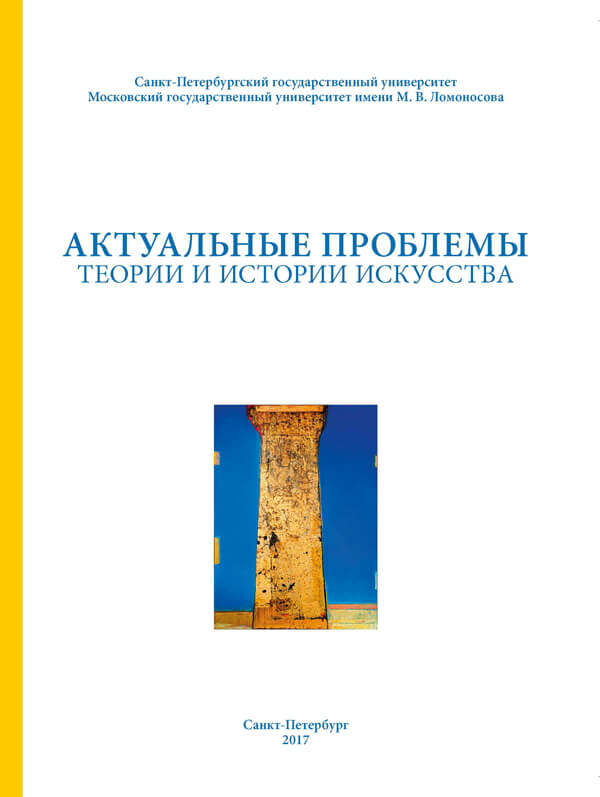Passover in the Netherlandish Painting from the Second Half of the 15th–16th Centuries: From Jewish Feast to the Last Supper
DOI:
https://doi.org/10.18688/aa177-5-57Keywords:
Passover, Last supper, iconography, Antwerp mannerists, Reformation, NetherlandsAbstract
Eucharistic iconography started to shape in the Netherlandish painting around the 15th century, but Eucharistic themes gained their true popularity not earlier than the 16th century, for artistic reason and ideologicalone, so to say, for the Reformation. It is due to the Reformation that the issues related to the Eucharistic theology and practices came into scope. M. McNamee examined certain aspects of Pesach images, especially the Eucharistic bias of the Passover’s visualization in the Saint Sacrament altarpiece by Dirk Bouts; in the paper by W. S. Dale, the meaning of the hidden monograms in the same altarpiece was shown. The negative connotations of Passover in late medieval art were examined in the research of D. Malkiel. However, the theoretical study of Passover iconography inthe Renaissance Netherlandish painting is still to be made. In this article, we have examined the ways of Passovericonography shaping, to discern its special iconographical types and to outline the boundaries of their occurrence, as well as to clarify the artistic and the social context of the creation and functioning of Passover images.As we have found out, Dirk Bouts shaped the most popular Passover iconographic type, which remained widespread through the 16th century. However, the Master of the Antwerp Adoration from the “Antwerp mannerists”group synthesized iconographic tradition of the Passover and the Last Supper and began to depict the Last Supper as the Seder meal. The interpretation of such changes remains controversial, however, with high probability it can be argued that religious unrest caused by the Reformation encouraged the appearance of such iconographical anomalies, as well as the integration into Dutch society of a considerable part of Jewish converts stimulated interest to Jewish culture and traditions. Spiritual and social change, openness of the Antwerp schoolof art to innovation — all contributed to the quest for artistic unusual compositional solutions. The interpretation of the Last Supper as a Passover survived the decline of the “Antwerp Mannerist” school and is found in the works of so-called Romanists, the Netherlandish artists from the second half of the 16th century. Romanists offered their own interpretation of the Passover, much more renaissance in its form and somehow even closer to the main narrative source — the Book of Exodus. Thus, innovation co-existed with the more traditional images of Passover: the pluralism of interpretations and innovativeness became the defining qualities of the Seder representations in the Netherlandish painting from the second half of the 16th century.
References
Amberg J. van. A Real Presence: Religious and Social Dynamics of the Eucharistic Conflicts in Early Modern Augsburg 1520 –1530. Leiden, Brill Publ., 2011. 270 p.
Bokser B. M. The Origins of the Seder: The Passover Rite and Early Rabbinic Judaism. Berkeley, University of California Press Publ., 1986. 188 p.
Bromiley G. W. (ed.). Zwingli and Bullinger. Philadelphia, The Westminster Press Publ., 1953. 364 p.
Cleland E. A. H. Grand Design: Pieter Coecke van Aelst and Renaissance Tapestry. New York, Metropolitan Museum of Art Publ., 2014. 401 p.
Dale W. S. A. Latens Deitas: The Holy Sacrament Altarpiece of Dieric Bouts. Canadian Art Review, 1984, vol. 11, no. 1/2, pp. 110–116.
Guggenheimer H. The Scholar’ s Haggadah: Ashkenazic, Sephardic, and Oriental Versions. Northvale, Jason Aronson, Incorporated Publ., 1998. 418 p.
Klenicki L.; Klenicki Cohen M. The Passover Celebration: A Haggadah for the Seder. Chicago, Liturgy Training Publ., 2001. 62 p.
Lacroix P. Manners, Customs, and Dress During the Middle Ages, and During the Renaissance Period. London, Chapman and Hall Publ., 1876. 554 p.
Luther M. De captivitate Babylonica ecclesiae praeludium. Luther M. D. Martin Luthers Werke: Kritische Gesamtausgabe, vol. 6. Weimar, Hermann Böhlau Publ., 1888, pp. 484–573 (in Latin).
Malkiel D. J. Infanticide in Passover Iconography. Journal of the Warburg and Courtauld Institutes, 1993, vol. 56, pp. 85–99.
McNamee M. B. Vested Angels: Eucharistic Allusions in Early Netherlandish Paintings. Leuven, Peeters Publ., 1998. 385 p.
Sabar S. From Amsterdam to Bombay, Baghdad, and Casablanca: The Influence of the Amsterdam Haggadah on Haggadah Illustration among the Jews in India and the lands of Islam. The Dutch Intersection: The Jews and the Netherlands in Modern History. Y. Kaplan (ed.). Leiden; Boston, Brill Publ., 2008, pp. 279–299.
Stechow W. (transl.). Dieric Bouts. Northern Renaissance Art 1400–1600. Sources and Documents. Evanston, Northwestern University Press Publ., 1966, pp. 11–14.
Stroo C. The Flemish Primitives: The Dirk Bouts, Petrus Christus, Hans Memling and Hugo van der Goes groups. Turnhout, Brepols Publ., 1999. 313 p.
Zwingli H. Subsidium sive Coronis de Eucharistia. Zurich, Froschouer Publ., 1525. 56 p. (in Latin).


